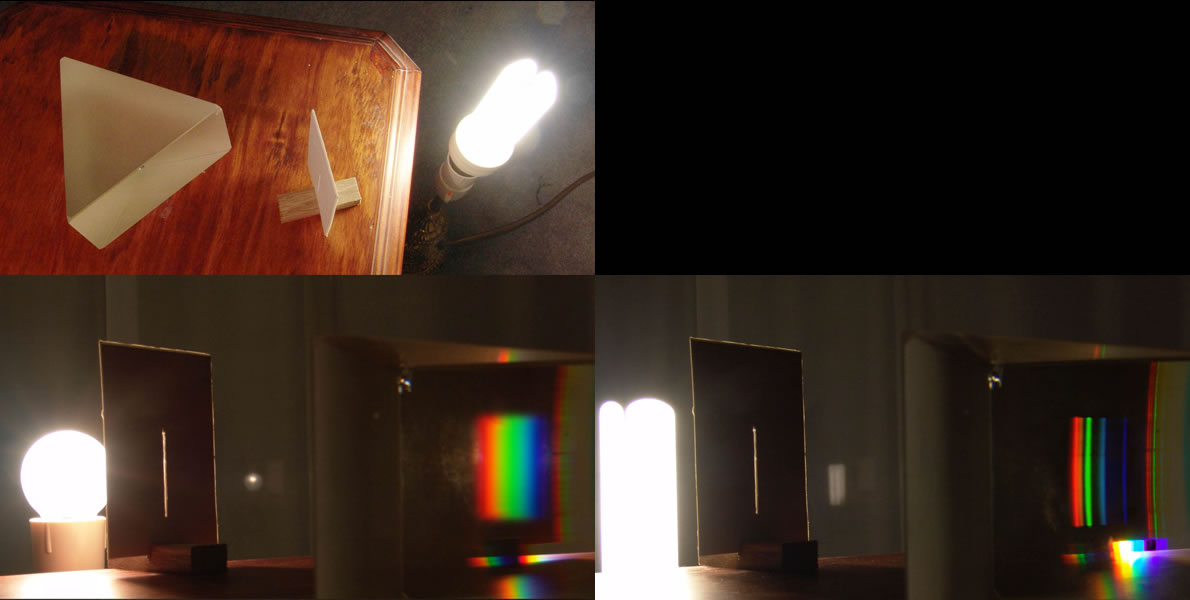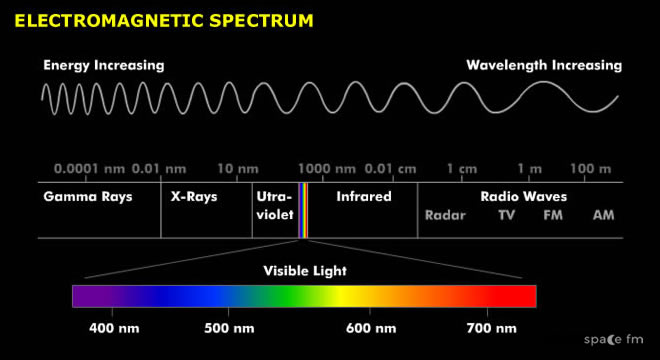Stellar Spectrum
13.21 - Understand how astronomers obtain and study the patterns of spectral lines in the light from astronomical objects13.4 - Understand what information can be obtained from a stellar spectrum, including
a) chemical composition
b) temperature
c) radial velocity
Isaac Newton used a prism to split white light into different colours. Astronomers use a spectrometer which uses the same principle to study a star’s chemical composition, temperature and even its velocity away from or to Earth.
If we use Newton’s experiment, using a darkened room, cardboard with a slit in it and a prism, we can see that two different light sources whether it is the Sun or a candle or a table lamp will produce a different spectrum of colour.
When we look at different stars with a spectrometer can be attached to a telescope we will see a different spectrum.
We can tell what atoms are present in the star by different coloured lines in the spectrum. These are called spectral lines. Some lines are dark and called absorption lines. These show what atoms are absorbing the light. Some lines are bright and called emissions lines. These show what atoms are emitting light.
For example, if there are darker lines that show Hydrogen and bright lines that show Helium we can say that the star has finished burning its Hydrogen and started burning Helium. A red giant would fit this evidence.
We can estimate the star’s surface temperature. By measuring its temperature distribution over a long period, we can even estimate its sunspot or starspot cycle. From the stellar spectrum we can also determine the revolution of a star in the same way we can use a spectrometer to measure the differential rotation of our own Sun.
We can measure the radial velocity of stars. By measuring the distance between certain spectral lines, we can measure its wavelength and be able to tell if and by how much it shows redshift (longer wavelengths show it is moving away from us) or blueshift (shorter wavelengths show it is moving towards us).
When we look at the spectrum of a binary it can present problems for us as we will see the combined spectrum for both stars. Great precision is needed to study the different parts.
Questions
- What equipment is used to detect the spectrum of a star?
- What does the spectrum tell us about the star?
- What are absorption and emission lines?
Animation
See Also
Links
- Imagine the Universe Light Curves, Spectra & Images
- University of Illinois Spectra
- Teachers' Lab The Science of Light
- University of Tennessee Astronomical Spectroscopy
- Annenberg Learner Spectrum of a Star



 | © All Rights Reserved |
| © All Rights Reserved |